Stamped metal parts have become essential in systems where heat control and structural support intersect. From mounting brackets to precision thermal interfaces, these components are now a standard in thermal-sensitive assemblies. They're not just about forming shapes—they're about creating predictable, stable, and scalable solutions.
This article outlines the role of stamped metal parts in thermal management and how precision stamping methods are supporting that role.
Stamped metal parts are components produced by applying high-pressure tooling to flat sheets of metal, forming them into precise shapes. These shapes are determined by stamping dies—engineered molds designed to create highly repeatable geometries. The process allows manufacturers to quickly generate thousands of parts with exact dimensions, consistent quality, and minimal variation between batches.
These parts are typically made from thermally responsive metals like aluminum, copper, brass, or stainless steel. Each of these materials brings unique benefits to thermal systems. Aluminum, for example, is lightweight and conducts heat well, making it suitable for battery trays and HVAC systems. Copper, known for its exceptional conductivity, is often used in high-performance applications like heat spreaders for power electronics. Stainless steel, while less conductive, offers superior mechanical strength and is often used when corrosion resistance and structural stability are priorities.
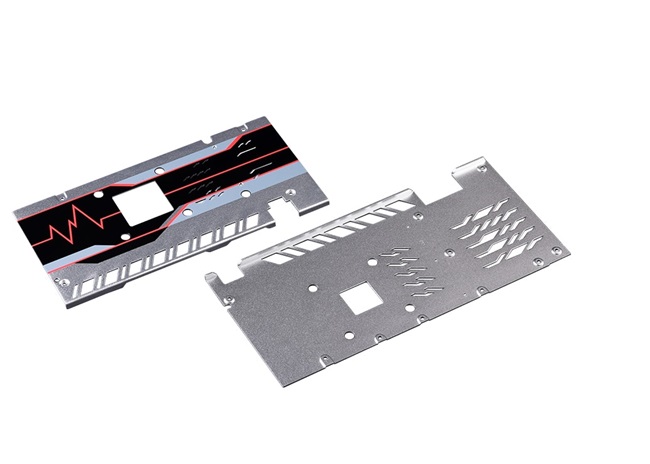
In thermal assemblies, stamped parts serve a variety of functions. Flat plates might be used to sandwich thermal interface materials between two heat sources. Bent or formed brackets could secure heat sinks to circuit boards or act as contact points between hot components and cooling enclosures. Even seemingly simple tabs or spring arms can provide enough surface contact to direct heat into a chassis, away from sensitive electronics.
What makes these parts so integral is not only their material, but their form. Surface flatness, edge alignment, and contact area all influence how efficiently heat moves through a system. Poorly formed or uneven parts can trap air pockets—creating hotspots and reducing system reliability. That's why stamping, which controls both shape and dimensional integrity, is a natural fit for thermal design.
Another critical factor is scalability. Many thermal applications—such as server cooling trays or EV battery modules—require hundreds of identical parts. Stamping ensures that each one behaves the same under load, helping engineers maintain thermal consistency across systems and simplify validation testing.
The journey from raw material to a functional stamped metal part begins long before the first press stroke. It starts with engineering design, where CAD software is used to define precise part geometries and performance expectations. These designs then inform the development of metal stamping dies—tooling that will shape every feature of the finished product.
Stamping dies are built to reflect not just the external dimensions of a part, but also its critical tolerances, stress points, and any thermal pathways it must support. For thermal components, tooling design often emphasizes flat surfaces and sharp, consistent corners. These features are key to maximizing surface contact and ensuring effective thermal transfer.
Once the tooling is manufactured—usually through a combination of CNC milling, EDM (Electrical Discharge Machining), and surface grinding—it's installed in high-speed stamping presses. These machines can range from 40 to over 1000 tons in capacity, depending on the part's complexity and material thickness.
During production, coiled or sheet metal is fed into the press. In progressive stamping setups, the metal passes through multiple die stations in a single run. Each station performs a specific function—blanking, bending, embossing, or piercing—contributing one step toward the final part. This sequential approach minimizes handling and ensures each part is shaped consistently, with minimal tolerance drift.
For thermal systems, stamping offers a particular advantage: it reduces the need for secondary processes like machining or grinding. The parts exit the press with finished edges, formed bends, and ready-to-use surfaces. That not only shortens production time, but also preserves material integrity, which is critical for maintaining conductivity and fit.
Stamped components can also be designed to accommodate other needs—ventilation slots, screw holes, snap-fit tabs—all formed in a single stamping cycle. This makes the process ideal for complex systems where thermal, electrical, and mechanical performance intersect.
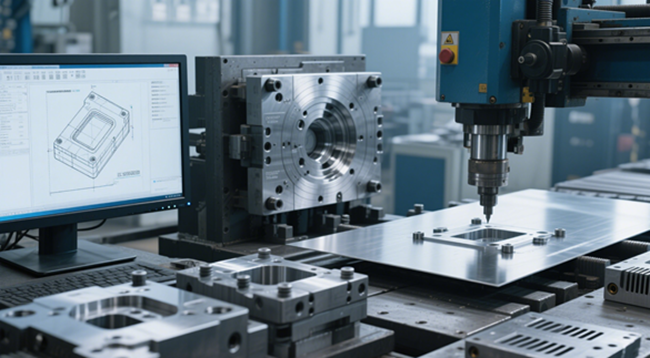
Thermal systems don't just move heat—they survive it. Components inside power electronics, battery housings, or high-density server racks often experience wide temperature swings. These thermal cycles expand and contract the materials around them, testing their structural integrity. Stamped metal parts play a crucial role in absorbing and adapting to these forces without compromising function.
Metals naturally expand when exposed to rising temperatures. But how they expand—and whether they return to shape—is determined by both material properties and geometric design. Stamped components, formed through a cold-working process, can be shaped with exact grain alignment and stress distribution. This makes their deformation predictable.
In applications like battery modules, where dozens of cells are tightly packed, even a half-millimeter shift can break thermal contact or exert pressure on sensitive electronics. Stamped brackets or separators stay in place throughout the heat cycle, maintaining their contact and spacing.
Beyond thermal expansion, components must also resist vibration, humidity, and fatigue over time. Systems in vehicles, industrial drives, or telecom enclosures must hold position for years. Stamped parts with built-in ribs, flanges, or folded edges provide extra rigidity without increasing material thickness. These features help parts withstand both static load and dynamic stress without warping or cracking.
Stamped metal parts are also well-suited for systems with frequent start-stop cycles or standby modes, where rapid temperature shifts are common. Their repeatable behavior under expansion helps protect adjacent materials, including thermal pads and mounting surfaces, from shifting or delamination.
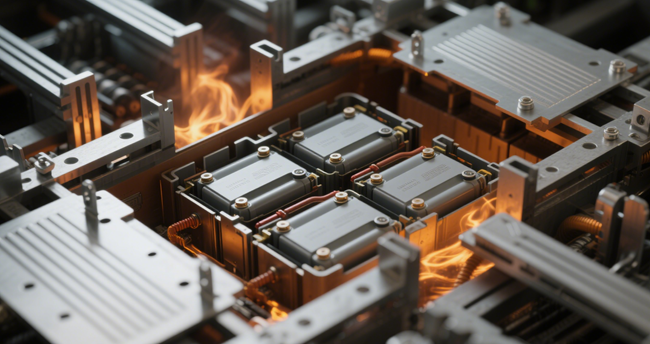
Stamped metal parts are uniquely positioned to solve a range of challenges in heat-sensitive designs. Their ability to combine multiple functions—mechanical, electrical, and thermal—into a single component offers engineers more control without increasing system complexity.
Many thermal systems are space-constrained. Instead of relying on a stack of machined parts, spacers, and fasteners, a stamped bracket can combine all necessary features—mounting points, airflow channels, and heat spreaders—in one piece of metal. This reduces part count, assembly time, and alignment issues.
The result is not only a cleaner design, but also improved reliability. Fewer components mean fewer failure points, less vibration-induced wear, and better thermal stability across cycles.
In weight-sensitive industries like automotive, aerospace, and handheld electronics, every gram matters. Stamped parts can be made from thin sheets—sometimes less than 1mm thick—while still providing the stiffness needed to hold heat-generating components in place.
Their geometry does the work. With proper folds, flanges, and internal supports, a stamped part can offer structural strength without extra bulk. This is especially useful in assemblies where the part must carry a load while maintaining thermal contact under compression.
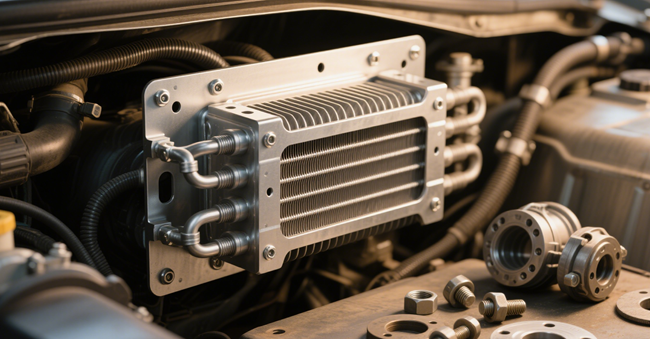
Stamped parts excel in high-volume manufacturing. Once tooling is dialed in, every part that comes off the press is nearly identical. This consistency isn't just convenient—it's crucial.
In heat-sensitive designs, predictable contact pressure, interface fit, and assembly clearance all impact thermal transfer. With stamped parts, engineers can model and validate system performance once, then replicate it reliably across thousands or millions of units.
Stamped metal parts are used wherever heat must be moved, managed, or controlled—often without being seen. Their flexibility in design and consistency in production make them ideal for integration into thermal systems across a wide range of industries.
High-performance inverters, motor drives, and industrial power supplies all rely on precise thermal paths to function reliably. Stamped plates are commonly used beneath power semiconductors to create solid, low-resistance contact with heat sinks or chassis. Their flatness and stability reduce thermal impedance, which improves energy efficiency and device longevity.
Stamped parts can also function as busbars, supporting both electrical current and heat dissipation in a single part. This dual functionality helps reduce assembly space and simplifies cooling strategies.
In electric vehicles (EVs), stamped parts are found throughout the battery pack, control units, and onboard chargers. They often serve as spacers between cells, shields for heat sources, or carriers that also conduct heat away from critical electronics.
Because EV systems must meet strict weight targets, aluminum-stamped components are preferred. Their ability to maintain form under stress—while still being light—makes them ideal for environments where both mechanical loads and temperature swings are significant.
Telecom base stations and server enclosures generate concentrated heat in confined areas. Stamped brackets guide airflow, support internal components, and conduct heat into larger chassis walls or cooling plates. In high-density racks, they may also act as alignment guides, EMI shields, or ground paths—while simultaneously supporting thermal transfer.
The predictability of stamped parts allows designers to model airflow and heat flow more precisely, ensuring stable performance even in 24/7 applications.
In laptops, LED systems, and embedded controllers, stamped parts often serve as frames, contact arms, or covers. These seemingly minor parts play key roles in ensuring that processors, memory chips, or LEDs remain within safe operating temperatures.
Their small size doesn't reduce their importance. Flat contact with a thermal pad or mechanical support for a board-mounted heat sink can dramatically impact device performance and product lifespan.
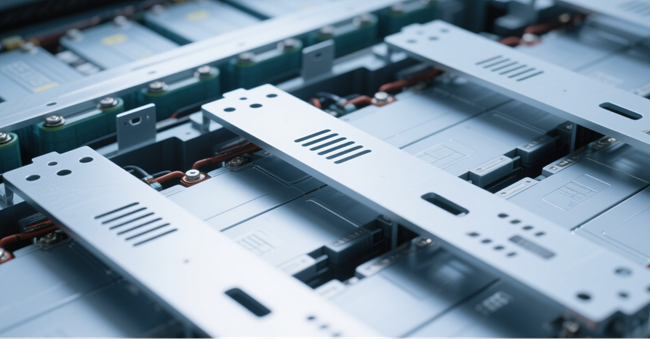
Stamped metal parts offer a reliable, scalable solution for managing heat in today's most demanding systems. Their precision, repeatability, and mechanical strength make them an ideal fit for thermal assemblies in electronics, automotive platforms, and industrial equipment. By integrating structural support with efficient thermal conduction, these components help extend product life, improve performance, and simplify design. For projects that require stamped solutions tailored for heat-sensitive environments, Enner delivers the expertise and manufacturing capability to meet your needs.
Learn more at www.ennergroup.com or contact [email protected].
By continuing to use the site you agree to our privacy policy Terms and Conditions.